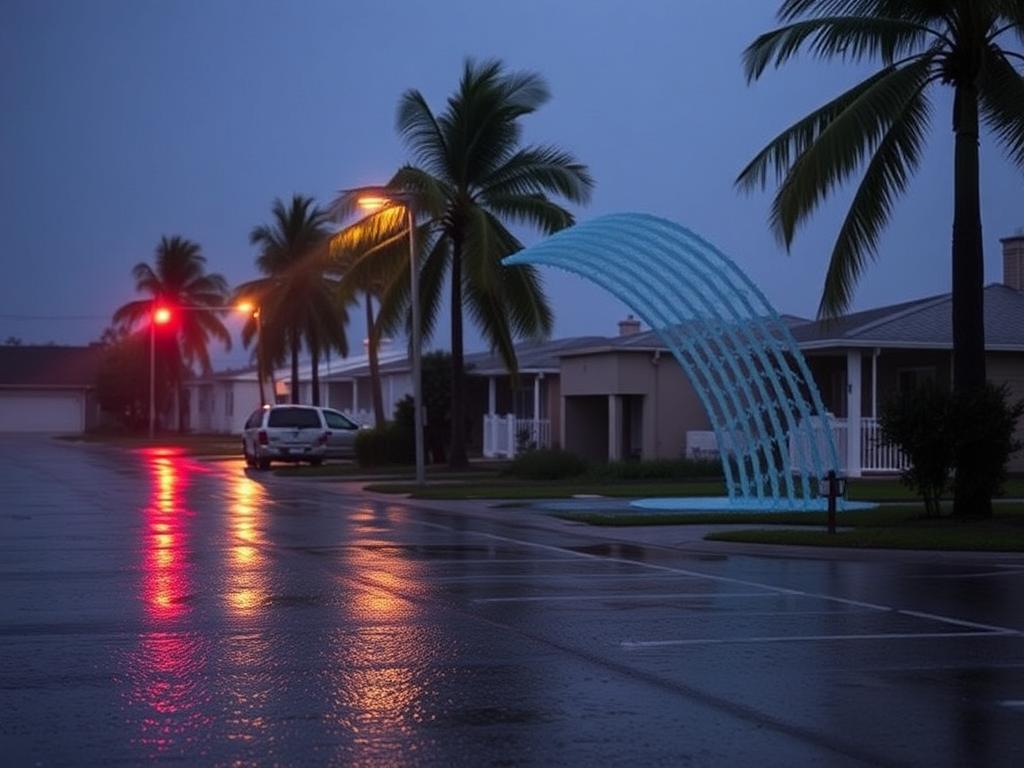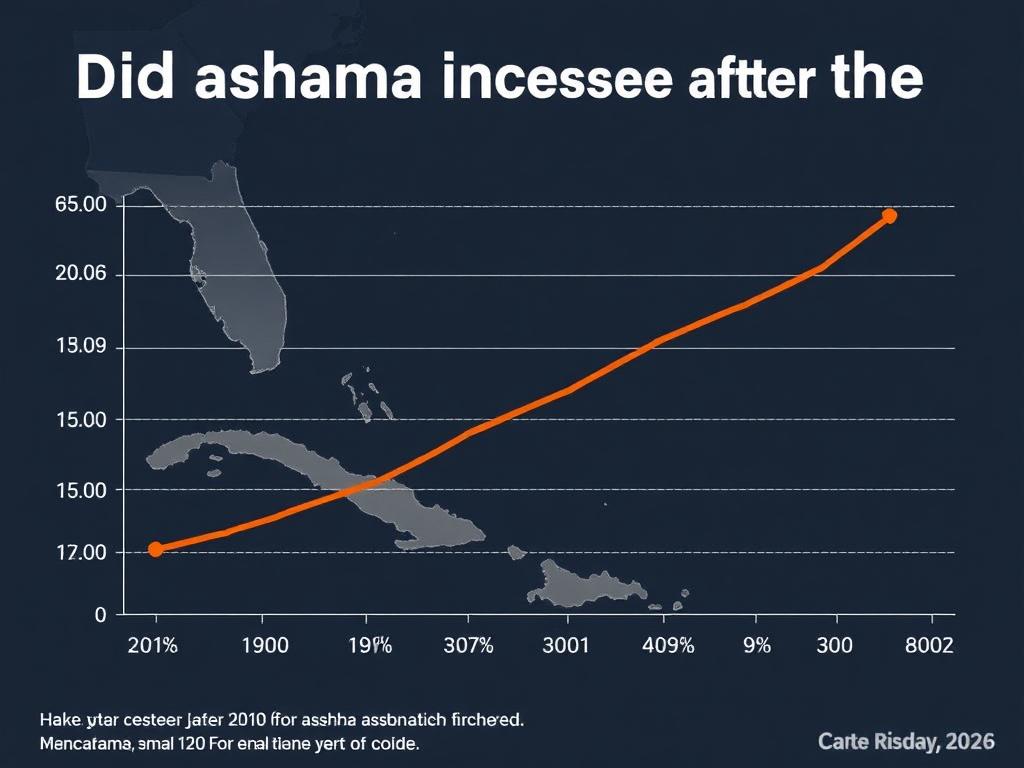Understanding the Connection Between Hurricanes and Asthma
Natural disasters often leave lasting impacts on communities, not just in terms of infrastructure damage but also regarding public health. Among the health concerns that often arise post-hurricane, respiratory issues like asthma flare-ups become especially worrisome. But did asthma actually increase after hurricanes? Real data and scientific studies provide an insightful look into this question. Hurricanes, with their powerful winds and heavy rains, often cause flooding, mold growth, and increased air pollution—all factors that can potentially exacerbate asthma symptoms.
It’s important to examine how these environmental changes influence asthma rates. People living in hurricane-affected areas may experience heightened exposure to allergens and irritants such as mold spores and particulate matter. Furthermore, displacement, stress, and limited access to healthcare following a disaster can compound the severity of asthma attacks. Understanding whether asthma cases rise after hurricanes—and why—helps governments and health professionals respond better and improve long-term disaster preparedness plans.
What Happens to Asthma Triggers When Hurricanes Strike?
To grasp why asthma might increase after a hurricane, it’s crucial first to understand its typical triggers and how they change in the aftermath of a storm. Asthma triggers vary by individual but commonly include:
- Allergens like pollen, dust mites, and mold spores
- Air pollutants such as smoke, ozone, and particulate matter
- Cold air and sudden weather changes
- Respiratory infections
- Stress and anxiety
Hurricanes often dramatically alter environmental conditions. Floodwaters saturate homes and buildings, fueling mold growth that releases spores toxic to sensitive airways. The strong winds stir up dust and debris, while power outages and damaged infrastructure can restrict access to medications or medical care. Smoke from post-hurricane fires or cleanup activities further pollutes the air. Even cooler, damp conditions can trigger bronchospasm in affected individuals.
Mold Growth and Its Insidious Role
Among the triggers that surge after hurricanes, mold is a leading culprit behind increased asthma attacks. Floodwaters provide an ideal environment for mold to thrive, especially when homes remain wet for extended periods. Mold spores are microscopic particles that float in the air; when inhaled, they irritate the lungs and airways, especially in people with asthma or allergies.
Studies show that post-hurricane mold levels can be many times higher than pre-storm concentrations, making mold exposure almost unavoidable in flooded areas. This phenomenon is particularly dangerous for children, the elderly, and those with pre-existing respiratory conditions. Despite the risks, many affected inhabitants may not be aware of the link between mold and asthma, increasing the chance of prolonged exposure.
Air Pollution and Particulate Matter Increase
Another factor contributing to asthma exacerbations after hurricanes is the rise in air pollution. Hurricanes can cause widespread fires, release debris, and increase dust in the atmosphere, leading to elevated particulate matter (PM) levels. PM includes particles small enough to penetrate deep into the lungs, aggravating respiratory conditions.
A closer look shows that both PM2.5 and PM10 levels spike in the days and weeks following a hurricane. These particles often come from damaged vegetation, soil disruption, and combustion sources as communities clean up post-disaster. Exposure to high levels of particulate matter has been linked to more frequent asthma symptoms, emergency room visits, and hospitalizations.
Real Data: What Science Says About Post-Hurricane Asthma Trends
Now that we understand the environmental factors that could increase asthma after hurricanes, it’s time to look at real data. Researchers have studied asthma trends by analyzing hospital admissions, emergency department (ED) visits, and public health records following major hurricanes.
Case Study 1: Hurricane Katrina (2005)
Hurricane Katrina was one of the most devastating storms in U.S. history, causing widespread flooding across New Orleans and surrounding areas. Researchers observed a significant increase in asthma-related emergency department visits in the months following the storm.
According to a study published in the American Journal of Respiratory and Critical Care Medicine, asthma and respiratory-related hospital visits increased by approximately 28% in affected areas during the year post-Katrina. Many attributed this rise to heightened mold exposure, poor air quality, and limited access to healthcare services. Additionally, displaced residents faced interruptions in their regular asthma management regimens, exacerbating symptoms.
Case Study 2: Hurricane Sandy (2012)
In 2012, Hurricane Sandy caused severe flooding and damage, especially in New York and New Jersey. Data from local health departments and hospital systems displayed a temporary rise in asthma exacerbations immediately after the storm.
One published report highlighted a nearly 20% increase in ED visits for asthma in flooding zones during the month following Hurricane Sandy. The increase was particularly notable among children and low-income groups, who may have faced barriers to medical treatment and living conditions conducive to mold proliferation.
Case Study 3: Hurricane Maria (2017)
Puerto Rico endured catastrophic damage after Hurricane Maria, which struck in 2017. Public health researchers tracked respiratory issues as part of their disaster impact assessments.
In the year following Maria, asthma-related hospital admissions surged by over 30%, according to government health statistics. The uptick correlated strongly with increased indoor mold contamination and limited availability of medications, given the disrupted supply chains on the island.
Comparing Post-Hurricane Asthma Data
To clarify the trends seen across different hurricanes, the below table summarizes key data points from several case studies that focused on asthma incidence after these natural disasters.
| Hurricane | Location | Reported Increase in Asthma Cases | Primary Causes | Duration of Effect |
|---|---|---|---|---|
| Katrina (2005) | New Orleans, USA | 28% increase in ED visits | Mold exposure, poor air quality, healthcare access | Up to 1 year |
| Sandy (2012) | NY & NJ, USA | ~20% increase in asthma visits | Flooding, mold, socioeconomic factors | 1-2 months |
| Maria (2017) | Puerto Rico | 30% increase in admissions | Mold, medication shortages, disruptions | Up to 1 year |
Factors Influencing Post-Hurricane Asthma Increases
While the data clearly show a pattern of increased asthma cases following hurricanes, the severity and duration vary widely based on several factors. Understanding these can help mitigate future risks.
1. Flooding Severity and Mold Growth
The extent and duration of flooding directly influence mold growth levels. The longer homes and buildings remain wet, the greater the mold contamination and the higher the potential for asthma exacerbation.
2. Population Displacement and Healthcare Access
Communities displaced by hurricanes often face disruptions in healthcare services. This leads to missed doses of asthma medications or delays in emergency care, worsening outcomes.
3. Socioeconomic Status
Low-income residents typically live in less resilient housing and may lack resources for cleanup or mold remediation, increasing their vulnerability to asthma triggers post-hurricane.
4. Pre-Existing Asthma Management Quality
People with well-managed asthma before the storm tend to handle exposures better than those with poorly controlled disease.
5. Government and Community Response
Efficient disaster responses that address housing, healthcare, and environmental cleanup minimize post-hurricane health risks, including asthma.
Preventive Measures and Recommendations for Reducing Asthma Risks After Hurricanes

Since the evidence shows that «¿Aumentó el asma después de los huracanes?» (Did asthma increase after hurricanes?), public health officials and individuals alike must prioritize strategies to prevent asthma worsening post-disaster. Here are some key recommendations:
For Public Health Authorities
- Develop rapid mold assessment and remediation programs following flooding events.
- Ensure availability and access to asthma medications and inhalers during and after disasters.
- Set up mobile clinics and telehealth services to reach displaced populations.
- Monitor air pollution and provide public alerts to minimize exposure.
- Educate communities about asthma management and triggers specific to hurricane aftermaths.
For Individuals With Asthma
- Keep an emergency supply of asthma medications and inhalers on hand.
- Avoid areas with visible mold and dusty debris during cleanup.
- Use protective gear (masks, gloves) when cleaning flooded areas.
- Maintain regular communication with healthcare providers for ongoing asthma management.
- Seek medical care promptly if symptoms worsen after a hurricane.
How Communities Can Build Resilience to Post-Hurricane Asthma Risks
Building stronger, healthier communities that can withstand the respiratory impacts of hurricanes involves long-term planning and collaboration. This includes:
- Enforcing building codes that reduce flood and mold risks.
- Investing in green infrastructure to manage stormwater and reduce flooding.
- Providing asthma-friendly housing options in vulnerable areas.
- Offering community training on disaster preparedness tailored for respiratory health.
- Collaborating with environmental and health agencies to continuously monitor risks and responses.
Emerging Technologies and Research Directions
As climate change continues to increase hurricane intensity and frequency, research into how these events affect asthma is critical. Innovations include:
- Remote sensing and air quality monitoring tools to provide early warnings of asthma triggers.
- Improved mold detection methods using portable devices.
- Telemedicine platforms for real-time asthma management post-disasters.
- Genetic and environmental studies to identify individuals most at risk after hurricanes.
- Development of new asthma medications or therapies focused on environmental trigger mitigation.
Frequently Asked Questions About Asthma and Hurricanes
Does every hurricane cause an increase in asthma cases?
Not necessarily. The rise in asthma cases depends on the storm’s severity, the level of flooding, and how well the post-disaster environment is managed. Some weaker storms may cause minimal respiratory health effects.
How long do asthma symptoms remain elevated after a hurricane?
Data suggest that increased asthma attacks can last from weeks to several months or up to a year, depending on ongoing exposure to triggers like mold and poor air quality.
Can stress after a hurricane trigger asthma?
Yes. Emotional stress is a recognized asthma trigger, and the trauma of a disaster can lead to worsening symptoms.
Are children more vulnerable to asthma attacks after hurricanes?
Children are generally more sensitive to environmental pollutants and allergens, making them particularly vulnerable to asthma exacerbations post-hurricane.
What role do cleanup efforts play in asthma trends after hurricanes?
Improper or delayed cleanup can prolong exposure to triggers like mold and dust, but careful, prompt remediation helps reduce asthma risks significantly.
Summary Table of Key Points
| Aspect | Details |
|---|---|
| Main asthma triggers post-hurricane | Mold, particulate matter, pollution, stress, infections |
| Typical increase in asthma cases | 20-30% rise in ED visits and hospitalizations in affected zones |
| Duration of increased risk | Weeks to up to 1 year post-event |
| Vulnerable groups | Children, elderly, low-income populations, pre-existing asthma |
| Prevention strategies | Mold remediation, medication access, education, healthcare access |
| Key challenges | Displacement, infrastructure damage, healthcare disruption |
Conclusion

Examining real data and trends, it is clear that asthma cases do tend to increase after hurricanes, driven largely by environmental changes such as mold growth, increased air pollution, and social factors like disrupted healthcare access. The question «¿Aumentó el asma después de los huracanes?» is answered affirmatively in many studied cases, especially following powerful storms like Katrina, Sandy, and Maria. However, the degree and duration of this increase depend on various factors including the severity of flooding, socioeconomic disparities, and the effectiveness of disaster response. By understanding these connections, public health officials, communities, and individuals can take meaningful steps to mitigate asthma risks after future hurricanes, protecting vulnerable populations and improving disaster resilience for everyone.
